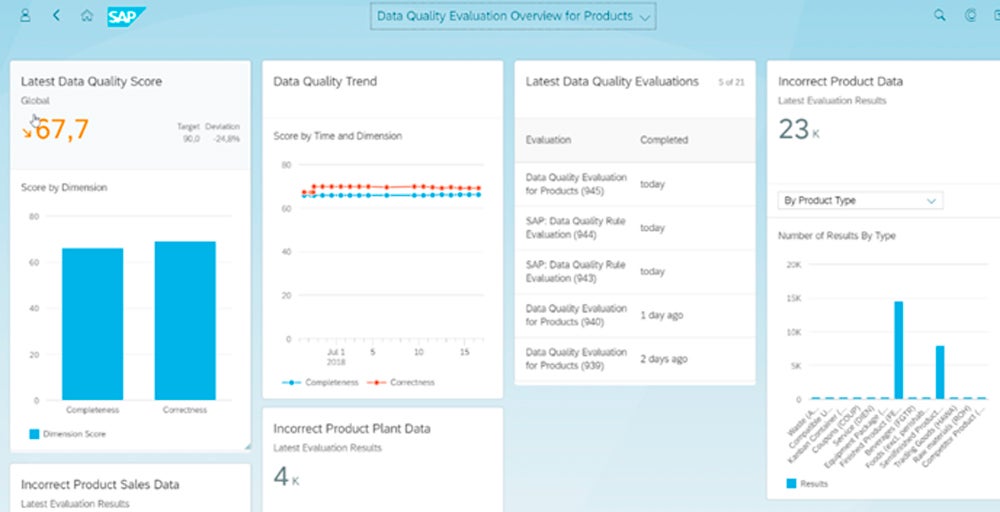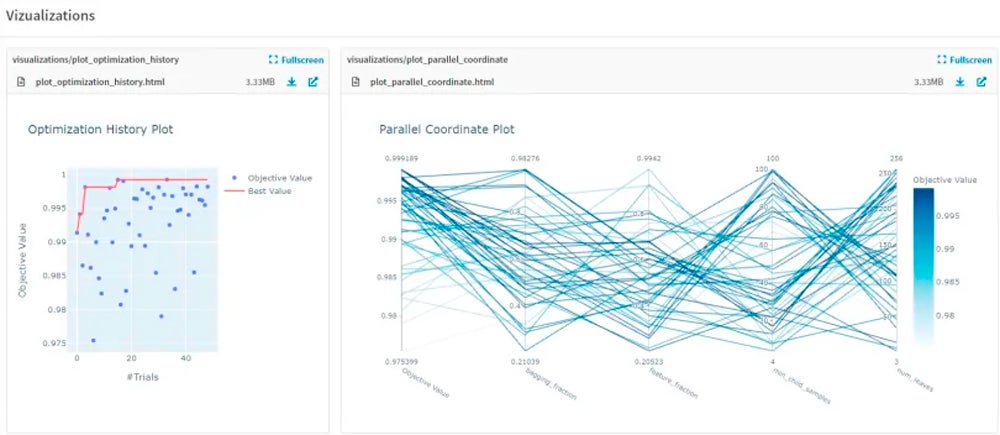Artificial intelligence for IT operations, or AIOps, is a growing industry practice in which IT professionals use AI, machine learning, and automation techniques to improve their workflows for efficiency and standardization. Across industries, businesses are adopting AIOps best practices because it makes their jobs easier and more productive. However, AIOps is a complex process that, when executed without a clear plan, can lead to more inefficient and convoluted IT processes.
To achieve the best results when implementing an AIOps strategy in your organization, it’s important to understand not only how AIOps can benefit your team but what AIOps best practices you should follow from the outset.
KEY TAKEAWAYS
- •When properly implemented with human oversight, AIOps can dramatically streamline IT processes and enable IT professionals to spend more time on high-impact tasks. (Jump to Section)
- •An integration-focused AIOps strategy that connects your AIOps tools seamlessly with critical IT data sources and systems is essential. (Jump to Section)
- •
- Defining AIOps objectives, identifying critical data sources, maintaining high data standards, emphasizing data security, and creating an AI use policy are some of the most important AIOps best practices. (Jump to Section)
TABLE OF CONTENTS
Invest in an AIOps Platform that Supports Your Strategy
AIOps is all about making your current artificial intelligence and IT processes more efficient. That only happens if your AIOps tools integrate with all the other most important IT resources, data sources, and business applications in your tech stack.
For the best possible results, look for AIOps platforms with deep native integration libraries or a highly functional API that makes it easy to connect your AIOps platform across your IT ecosystem. Aim for minimal customization and fine-tuning requirements, at least at the start, so you can keep the AIOps platform running efficiently even as your other tools change and scale.
Define Clear Goals for Your AIOps Strategy
AIOps is only effective if you know what you’re using it for and what you’re hoping to improve with AI-driven automation and workflows. Every organization’s goals and KPIs are different when it comes to AIOps, but regardless of your individual differences, you’ll achieve better outcomes if your goals are framed as part of larger IT, operations, and business objectives.
For business leaders who are not sure where to start, consider setting goals around the following IT operational tasks and improvements:
- Improved mean time to resolution (MTTR)
- Improved mean time between failures (MTBF)
- Reduction of IT incidents and outages, particularly for critical services
- Resource optimization and allocation across cloud and on-premises resources
- Proactive issue detection and incident mitigation
- Reduction of false positives and false negatives
- Resource provisioning time
- Capacity utilization across usage metrics
- Quality and frequency of change impact predictions
- Number of policy and compliance violations over time
- IT operational expenses over time
When you know your objectives, you’re better prepared to design an AIOps strategy that achieves them.
Identify Data Sources Relevant to Your AIOps Strategy
Once you’ve completed initial tool research and goal setting, you’ll need to get a handle on all relevant data sources that need to be accessed, integrated, and migrated for effective AIOps. Examples of relevant IT operations data and their sources include the following:
- System logs from servers, applications, and networks
- Incident and problem data from ticketing systems
- IT asset data from configuration management databases (CMD)
- App performance metrics from application performance management (APM) tools
- Security events from security information and event management (SIEM) systems
Consider the different formats of data involved, how it is used, and the different location(s) where it currently lives in your network. Most important, determine if this data exists in different formats across your organization. If that’s the case, you’ll want to clean and standardize that data before adding it to your AIOps system.
Ensure High Data Quality Standards in AIOps
AIOps relies heavily on data for AI and ML training and for operational queries. It’s important to hold your organization to high data quality standards so all the data that you need is accessible, understandable, up-to-date, and in an actionable format.
Some of the steps you can take to improve data quality include using data cleansing, data mapping, data preparation, and data integrity management tools. You should also invest in data governance tools, as these can help improve data quality, security, and compliance while also assisting IT teams in monitoring and addressing changes in data quality over time.

Prioritize Data Security Within Your AIOps Strategy
Data security best practices and tools are necessary for smooth operations, regulatory compliance, and maintaining business reputation and customer trust. Beyond investing in data governance tools as mentioned above, your AIOps teams should adhere to the following data security best practices as well:
- Use only secure and trusted databases and data sources
- Keep your data storage systems updated
- Make sure all data storage practices align with regulatory and security requirements
- Set up mobile device use and data management policies for employees
- Designate a multi-tier access and authorization system for your most critical assets
Whenever it’s necessary for larger groups of people to access or use sensitive data, look for additional ways to protect that data, such as data encryption, anonymization, and/or masking. Bear in mind that if your organization is interested in using generative AI in its AIOps workflows, additional data security rules and best practices are necessary.
For example, it’s best to set a rule along these lines: “implement a data masking policy for all sensitive information before it’s processed by the generative AI model.’ In any case, with data breaches increasing year-on-year, precautions and vigilance are required to run a cost-effective and low-risk AIOps strategy.
To learn more about integrating your business data to optimize your generative AI deployment, read about the best practices for generative AI and data analytics.
Refine Your Strategy with a Test AIOps Project
Before setting up the entire network and several automations within an overarching AIOps framework, you should first complete a test run with a smaller project as a proof of concept. Some small AIOps test projects to consider:
- Set up an AI-powered log analysis to detect anomalies on one server or application
- Automate your service desk ticket classification process with natural language processing
- Deploy an AI chatbot to answer common IT questions in one department
When planning the test project, be sure to define its scope, success criteria, and performance monitoring strategy. This will help you spot what worked and what didn’t in your post mortem. During the test run, monitor how the infrastructure performs and also make note of how the team handles this new workflow. When it’s over, make adjustments to infrastructure, team training, cybersecurity tooling, and your AIOps plan accordingly.
Create an AI Use Policy for Your AIOps Approach
Any organization, department, or team that uses AI needs to be held accountable to an AI use policy, and receive training on the technology and its role in operations. The policy should cover questions about how AI is being used in the organization, individual roles and responsibilities when using AI, and how to maintain data security and integrity while using AI. If you’re looking for an example AI policy to use as a foundation for your own, our free AI ethics policy template is an excellent place to start.
Learn more about the KPIs for measuring AIOps’ impact on your business.
Optimize Your AIOps Strategy by Monitoring Workflows
Your team should be monitoring network performance at all times, but it’s especially important when implementing a new operational practice like AIOps. By keeping a close watch, you’ll be able to measure the impact of your AIOps improvements, detect implementation snags, and boost stakeholder confidence in the initiative.
You’ll want to use monitoring tools with features that support analytics and deeper dives into AI and ML performance on a regular basis. On a less frequent basis, your team or an objective third party will need to conduct deeper network audits to assess how each piece of the AIOps workflow is performing and how it’s impacting the rest of your network’s performance.
Some monitoring tools simply notify users when a possible issue arises, while others offer suggestions or take corrective action. Select a monitoring tool that complements your team’s skill sets, budget, and other team requirements.

Strengthen Your AIOps Strategy Through Process Documentation
Documenting AIOps processes after they are quality-tested and approved is one of the surest ways to protect the integrity of the overall operation. Concrete, detailed documentation also supports change management efforts, giving business leaders the resources they need to keep things running smoothly as team members, tools, and other components of the workflow change over time. Documentation can be kept in traditional data storage and database systems for easy access, but many businesses will benefit from storing this documentation in an additional off-network or highly secure location.
Maintain Sufficient Human Oversight
In AIOps, striking the right balance between automation and human control is essential. AI is still in its infancy, and while it’s great for automatically spotting and resolving common, well-understood issues, it may struggle with complex or unusual problems, and it shouldn’t be making significantly impactful decisions without your permission.
You’ll therefore want to set up automated notifications and approval workflows to prompt human intervention when necessary. For example, an AIOps system might detect low disk space and clear old logs. If this fails to resolve the server issue, the tool will notify someone on your IT staff with suggested next steps, allowing them to use their expertise to fix it.
As artificial intelligence develops, you’ll be able to use an increasingly long leash, automating more IT Ops processes and tasks and lessening your supervision. But for now, emphasizing human oversight, especially over critical and complex systems, is crucial to the success of your AIOps strategy.
Broaden the Scope of Your AIOps Strategy Beyond IT
AIOps is technically focused on IT operations, but these AIOps best practices can be applied across an organization, especially as AI and advanced business technologies become an integral part of enterprise operations outside of IT departments. For example, marketing teams are already using artificial intelligence and big data to better understand their audience. Sales teams are using AI tools to automate lead scoring, AI sales forecasting, and other repetitive tasks.
Making sure all members of your organization across all departments understand how AI can automate their workflows and create new efficiencies could help your overall organization get problems like tool sprawl and inefficient daily operations under tighter control.
Bottom Line: Implementing AIOps Best Practices Is Complex
AIOps is still a fairly new IT operations strategy, but because of the many new efficiencies it introduces to team workflows, it has quickly gained traction across industries and teams. Perhaps more importantly, it enables IT professionals to spend time on higher value tasks.
Despite its advantages, IT professionals need to remember that setting up AIOps can be a complex, multi-faceted process, and getting it wrong may create even bigger operational headaches than existed before, not to mention potential new security and compliance issues. If your team takes the extra time necessary to properly set up automated workflows with appropriate expectations and rules from the beginning and avoids common AIOps mistakes, your AIOps plan stands a better chance for success in the long run.
Learn about the most significant AIOps trends shaping this emerging technology.